Hydraulic Hose Maintenance

Hoses are aligned and secured to achieve maximum possible performance. The pressure rating and quality of a hose can be used to predict its service life. Not much can be done to extend the life of a hose, but improper mounting and alignment contribute to shortening the life of a hose.
IMPORTANT: Two conditions that contribute to shortening the service life of a hose are installing it twisted or installing it over bent. The twist of a hose is measured in degrees from the lay line, which is a line printed on the hose that runs parallel to the hose axis. The bend of a hose is the curvature of a hose from a straight line expressed as the radius of the bend. The bending radius of a hose is measured to the outer wall of the hose on the inside turn (see Figure 1).
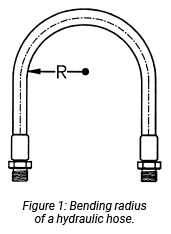 Avoid sharp twists or bends in a hose by using proper hose angle adapters. Do not bend the hose in an arc that is less than the minimum bend radius of the hose given in the application table. Be especially careful of sharp bends where the hose connects to the fitting. Never kink a hose or clamp a hose at the bend. This prevents the hose from expanding and contracting at the bend. Never allow the outside of the bend to be aimed at the equipment operator because this is a likely place for the hose to burst. Never tie down a vibrating hose with a wire, rope, or any material that might wear through the hose cover. Hoses must be routed to flex in no more than a single plane. If a compound bend is called for (this is a bend in two directions), the path must be divided into two segments with a clamp, or a coupling and a clamp where the bend changes direction, to be sure that each hose segment flexes only in one plane.
Avoid sharp twists or bends in a hose by using proper hose angle adapters. Do not bend the hose in an arc that is less than the minimum bend radius of the hose given in the application table. Be especially careful of sharp bends where the hose connects to the fitting. Never kink a hose or clamp a hose at the bend. This prevents the hose from expanding and contracting at the bend. Never allow the outside of the bend to be aimed at the equipment operator because this is a likely place for the hose to burst. Never tie down a vibrating hose with a wire, rope, or any material that might wear through the hose cover. Hoses must be routed to flex in no more than a single plane. If a compound bend is called for (this is a bend in two directions), the path must be divided into two segments with a clamp, or a coupling and a clamp where the bend changes direction, to be sure that each hose segment flexes only in one plane.
IMPORTANT: Avoid putting a twist in a hose when it is installed. Twisting or torquing will shorten the life of the hose. Some technicians report putting a slight twist in hoses during installation so that the hose will miss an obstruction or lay against the machine frame. This practice is incorrect. Instead, the hose should be secured with a tie-down. Make sure twisting will not occur after installation, for example as a result of relative motion between machine elements. Avoid temporary twisting, called transient twisting, even during installation. Remember that mounting a hose with as little as 10 degrees of twist can shorten its service life by as much as 90%.
All hoses should be secured. Be careful to avoid extensive flexing and contact with moving machine members. Once installed, hoses must be bled of air and pressure checked for leaks. As a safety precaution, if there is any bending movement at the coupling, install a spring guard at the fitting to keep the hose from kinking at the fitting.
IMPORTANT: A bursting hose is dangerous. It spreads fluid at high pressure, which can cause serious injury as well as leave illegal oil spills that contaminate the environment. Fittings that can be positioned, such as elbows and branch tees, should be positioned in the direction to accept hose fittings before the lock nut is tightened against the back-up washer. Finally, most manufacturers of SAE straight thread fittings advise limiting their use to lines no larger than 7/8 inch O.D. Anything above 7/8 inch O.D., flange connectors are recommended.
IMPORTANT: The minimum bending radius of a hose is taken from manufacturer’s charts. The bending radii increases as the dash size diameter of the hose increases. It also increases as the pressure increases. When a hose is subjected to bends smaller than recommended, hose operating pressures must be reduced. Similarly, if the hose is subjected to lower operating pressures, a smaller bend radius may be used. The minimum bending radius for typical hydraulic hose in dash sizes from -4 to -16 can be read from Figure 2.
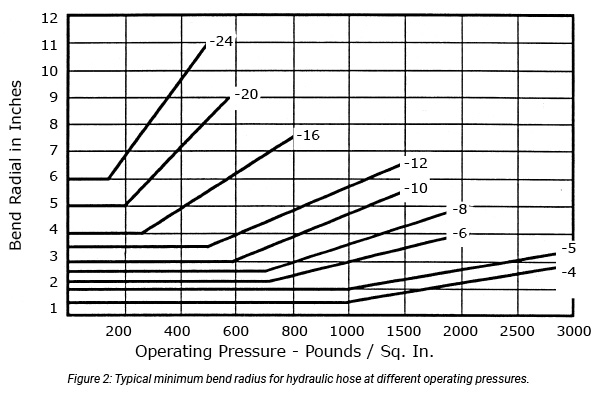
Minimum bend radius is related to hose diameter and operating pressure. A typical -8 (l/2 inch) single wire braid hose that has a 2-1/2 inch minimum bending radius for operating pressures of 750 psi, would have almost a 5 inch minimum bending radius at 2000 psi. Similarly, if the hose size were increased from -8 to -16 (1 inch), the minimum bending radius for operating pressures of 750 psi would be have to be increased to 7 inches.
IMPORTANT: The minimum bend radius is figured for a stationary hose. If the hose is also subject to flexing conditions, the minimum bending radius is multiplied by a bend factor, which ranges from 1.1 to 1.5. For example, if a hose flexes 90 degrees, the minimum bend radius might be increased 1.25 times. How much the bending radius for a specific hose must be increased is determined directly from manufacturer charts. What is important to remember is that minimum bend radius is affected by hose diameter, operating pressure, and flexing conditions. Moreover, if the minimum bend radius is exceeded, that is the hose is bent too short, the service life of the hose will be reduced and the hose may burst at the outside of the bend or at one of the fittings.
Hoses are checked for proper mounting by visual inspection. Assemblies should be compact and properly assembled. Use elbows and adapters to eliminate excess hose lengths, and possible interference or abrasion. Using the correct fitting also facilitates future maintenance. Hoses should be long enough to prevent pulling when they are assembled. This reduces the bend radius at the fitting, which will cause it to fail at the fitting. Hoses should be mounted with brackets or insulators away from heated surfaces and machine members that could damage them mechanically.
IMPORTANT: To determine if the hose is twisted, look for the lay line, and make sure that it follows the axis of the hose without twisting, even through bends in the hose.
Test Your Skills
1. Installing a hose twisted as little as 10 degrees can shorten its service life as much as:
a. 20%.
b. 40%.
c. 50%.
d. 75%.
e. 90%.
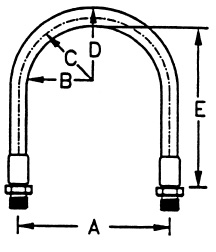 2.The bending radius of a hydraulic hose is measured from the:
2.The bending radius of a hydraulic hose is measured from the:
a. Center line of the terminal fittings.
b. Outer wall of the inside bend.
c. Center line of the tube.
d. Outer wall of the outside bend.
e. Terminal fitting to the inside bend.
3. Which hose shown below had a twist put in it during installation?
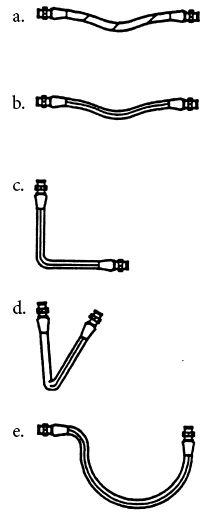
4. Using Figure 2 as a reference, what is the minimum bend radius for a 1 inch diameter hose operating at 800 psi?
a. 5 in.
b. 6-1/2 in.
c. 7 in.
d. 7-1/2 in.
e. 9 in.

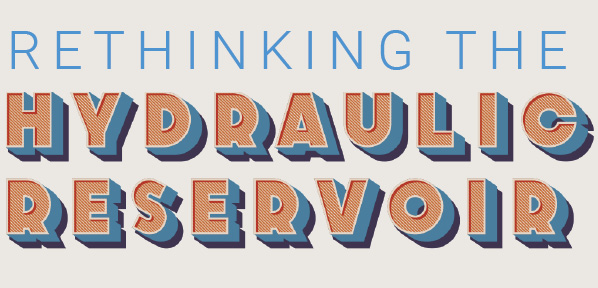

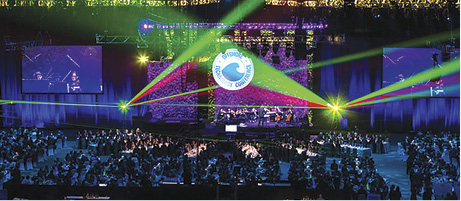



Please send me some fire materials.
Thank you for sharing this informative article on the proper installation and maintenance of hoses. It highlights the critical importance of correct hose alignment and secure mounting to ensure safety and longevity. It serves as a valuable guide for anyone dealing with hoses in various applications.